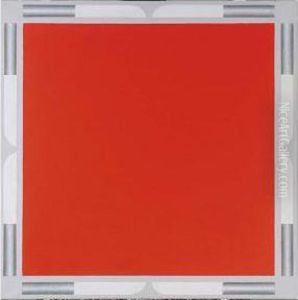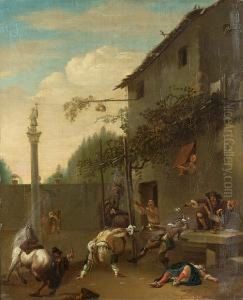Roeland Van Laer Paintings
Roeland van Laer, often known by his nickname Roelandt Savery or Roelant Savery, was a prominent Flemish-born and later Dutch Golden Age painter, draftsman, and printmaker. Born in Kortrijk (Courtrai) in the Southern Netherlands (present-day Belgium) in 1584, he was part of the vibrant artistic milieu of the late 16th and early 17th centuries, a period marked by significant political and religious upheaval in Europe. His family moved to the Northern Netherlands due to the threat of religious persecution, as they were part of the Protestant minority fleeing the Catholic Spanish rule over the Southern Netherlands. This move significantly influenced his artistic training and career, embedding him within the burgeoning Dutch art scene.
Savery's work is characterized by its detailed and imaginative depiction of landscapes and nature, including a wide variety of animals and fantastical scenes. He was particularly noted for his skill in portraying exotic and domestic animals, often within idyllic, Eden-like landscapes. His paintings are rich in detail and vibrant in color, reflecting the Renaissance interest in naturalism and the burgeoning scientific curiosity about the world. Among his most famous works are depictions of the dodo, an extinct bird that he is believed to have seen in life, making his paintings valuable records of this lost species.
Throughout his career, Savery worked in several cities across Europe, including Prague, where he was court painter to Emperor Rudolf II, a well-known patron of the arts and sciences who had a keen interest in natural history and exotic animals. This position allowed Savery access to the imperial menagerie and library, resources that greatly enhanced his work. After leaving Prague, he worked in Amsterdam and Utrecht, where he became a member of the Utrecht Guild of Saint Luke. His works during this period continued to reflect his interest in natural history and his exceptional ability to blend detailed observation with imaginative composition.
Roelandt Savery's legacy is marked by his influence on the development of landscape and still-life painting in the Dutch Golden Age. His meticulous attention to detail and his ability to create harmonious compositions that celebrated the beauty and diversity of the natural world left a lasting impact on the art of his contemporaries and successors. He died in Utrecht in 1657, leaving behind a body of work that continues to be admired for its artistic and historical significance.

